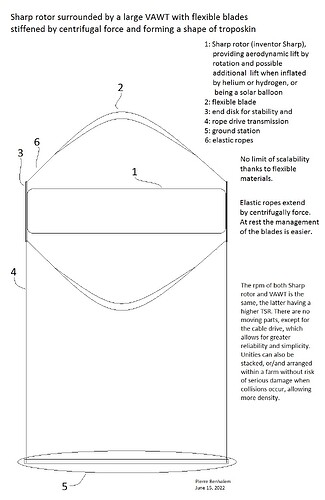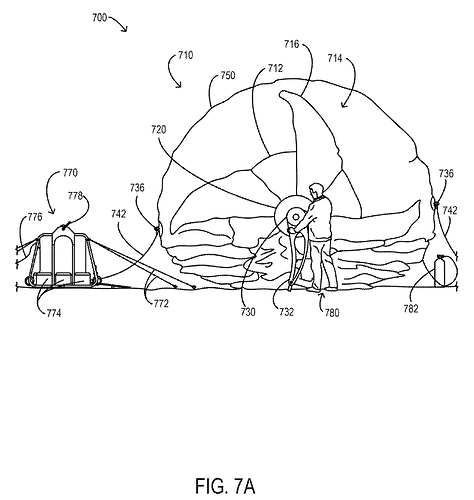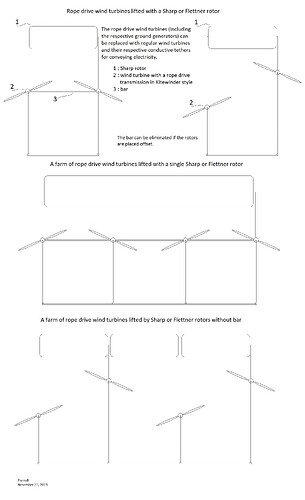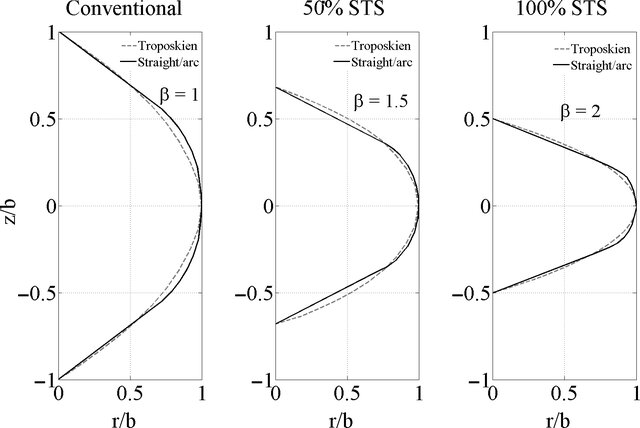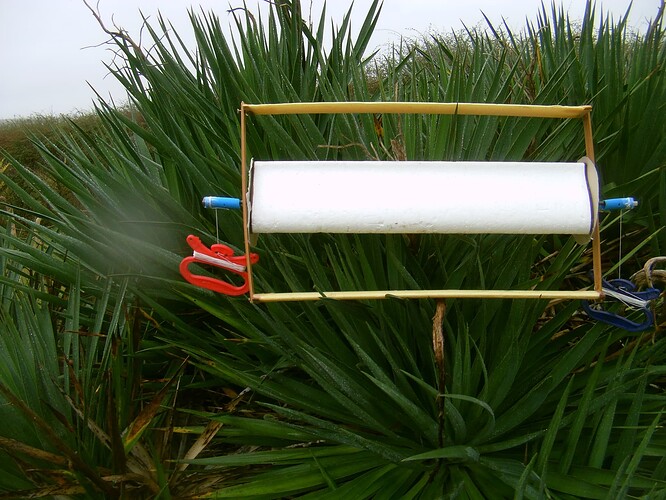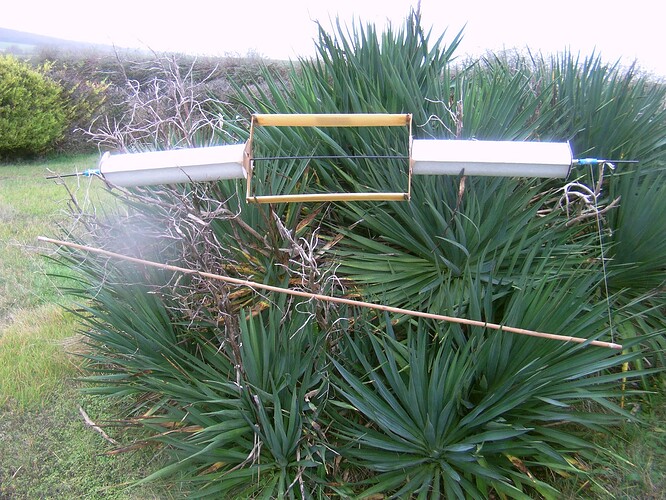I tested today a Sharp rotor within a vertical axis wind turbine (VAWT) of type Darrieus, beside a similar Sharp rotor but alone. Wind speed 10-12 m/s.
The Sharp rotor generated lift, lifting its own weight from a wind speed of 5 m/s. But within a vertical axis wind turbine (VAWT) of type Darrieus, the lift looked to be cancelled.
After playing the video in slow motion (0.25), it appears, according to the orange adhesive indicator, that the rpm was 360, for a wind of at least 10 m/s. However, in front of the fan which sends air at 3 m/s onto the VAWT, it rotated at rpm 320 (incidentally the same rpm 320 with the Sharp rotor alone), which is barely less, the TSR becoming 3 times lower at 10 m/s wind speed compared to the 3 m/s fan air. My VAWT therefore plateaued from a certain wind speed, which drastically limited the TSR of the internal Sharp rotor and therefore its lift.
According to the figure 4 of Experiments on a Flettner rotor at critical and supercritical Reynolds numbers | TU Delft Repositories, a TSR 3 times lower implies a lift coefficient 3 times lower. And by the figure 7, a TSR 3 times lower implies a drag coefficient about 2.5 times lower. The thrust combines both lift and drag. On this video I measured a thrust of 10 N with 10 m/s wind speed, and 16 N with 12 m/s wind speed.
I deduce (without certainty because a Sharp rotor is not exactly a Flettner rotor) that with a TSR 3 times lesser the respective thrusts were 3.3 N and 5.3 N. I would have felt such a thrust, and for the last value of 5.3 N, the whole thing would have lifted slightly, which was never the case during the experiments, both when holding and when releasing: it fell immediately, which also confirmed the very low drag due to the low TSR which probable resulted from the condition of my old blades, too deformed to be efficient at high wind speed.
If the lift is cancelled in a too large proportion, it would be necessary to separate, to put side by side, the Flettner or Sharp rotor and the VAWT(s), as shown in the sketches above.
Here is what was tested (Sharp rotor 0.5 m x 0.11 m, VAWT 0.52 m x 0.3 m, whole weight 0.360 kg):
This video on Youtube was in private mode and is now in public mode:
If it is not available I can put the video directly on the forum.
